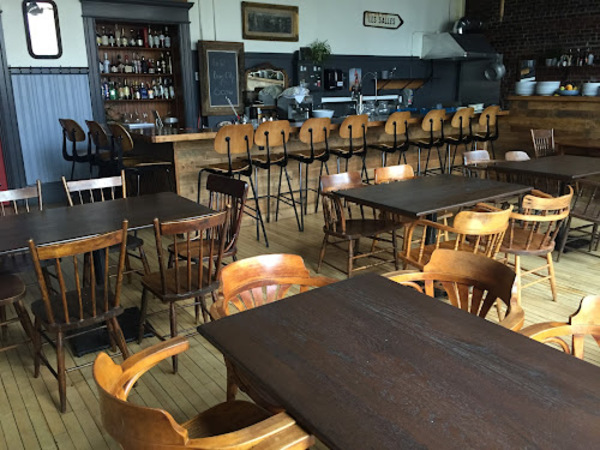Crossing the Matapedia Valley, one reaches the Restigouche River, into which the Matapedia flows. The Restigouche empties into the Chaleur Bay in the heart of the Appalachians. It is a river globally renowned as a salmon river and part of Canadian heritage. The name Restigouche comes from the Anglicization of Listuguj, the name of the Mi'gmaq community that camped along its banks hundreds of years before the arrival of the first French colonizers. Even today, the community of Listuguj, one of the most significant Mi'gmaq communities in the Maritimes, stands on the Quebec side opposite the town of Campbellton in New Brunswick.
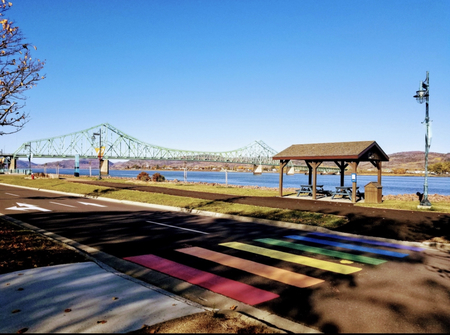
On the right bank of the Restigouche, the newly merged town of Campbellton forms, along with the communities of Listuguj and Pointe-à-la-Croix connected by the interprovincial bridge, the most significant conurbation in the Chaleur Bay with its some 15,000 inhabitants.
The Mi'kmaq called the site Wisiamkik, meaning muddy place, referring to the sediments in the narrows of the Restigouche. The site was named Pointe-des-Sauvages around 1700 during the French colonial era, and a small village was founded there by deported Acadians in 1755, while more than 1,000 deportees settled across in Petite-Rochelle. This significant village only had a brief existence as it was razed under the orders of James Wolfe after the fall of New France in 1760. The site became a mere trading post for decades as the Acadians dispersed and founded various villages around Chaleur Bay. The town truly emerged with Scottish immigration to the region in the early 19th century. The town originally bore various names. The current name was given in 1833 in honor of Sir Archibald Campbell, Lieutenant-Governor of New Brunswick from 1831 to 1837.
When you reach the end of the road leading to the tip of the peninsula and spot the vast seaside estate featuring a 24-room hotel including an aesthetic care center (spa), a convention center, and 33 chalets available for rent scattered about, one realizes the scale of the welcoming place.
The site impresses with its magnitude, its streets marked like those in a village, its tranquility, and the sense of well-being it exudes, thanks to a uniquely designed layout. A stay will convince even the hardest to please. The hotel offers all the amenities one might expect from such a location. Breakfast is included and served in a room with a full sea view, but no other meals are provided during the day. Several dining options are available a short distance away in the town of Tracadie.
Villégiature Deux Rivières truly provides hotel service worthy of major hotel chains, but without the associated constraints. Martin Albert, a native son with an MBA in Business Administration from the Université de Moncton, has been the general manager since 2013. Albert was previously the general manager of the municipality of Paquetteville.
“What sets Villégiature Deux Rivières apart from chain hotels is that everything is decided and managed locally,” explains its general manager.
 Martin Albert is proud to have been part of this wonderful adventure for nearly 10 years. For him, the mission and vision of Villégiature Deux Rivières are part of his everyday life. Although the place has already become a staple for quality accommodation and stays in recent years, he aims to make it “the preferred destination in Atlantic Canada, where guests can capture unforgettable Acadian-flavored memories.”
Martin Albert is proud to have been part of this wonderful adventure for nearly 10 years. For him, the mission and vision of Villégiature Deux Rivières are part of his everyday life. Although the place has already become a staple for quality accommodation and stays in recent years, he aims to make it “the preferred destination in Atlantic Canada, where guests can capture unforgettable Acadian-flavored memories.”
The introduction of a bike path in the area has attracted a new clientele for whom the environmental tranquility of the place, with the omnipresence of the sea and breathtaking sunrises, are key attractions. In winter, the snowmobile trails also bring many visitors.
A story that began almost 25 years ago.
It was in 1999 that the adventure of the Deux Rivières Resort Center began in Tracadie-Sheila. The municipality had entrusted the Two Rivers of Tracadie Development Corporation (CDDRT) with developing this exceptional site.
From then on, thanks to a public-private partnership agreement between a group of local investors and the CDDRT, construction of 33 chalets began. The following year, the convention center was built. In 2001, 17 new chalets were added. Then in 2009, a 20-room hotel was built. Just in time for the World Acadian Congress.
In 2012, the company underwent a name change to become Villégiature Deux Rivières, better reflecting the services offered by the business. In 2013, the Two Rivers Development Corporation of the municipality withdrew from the resort center, which is now fully managed by this corporation of owner investors.
The company wanted to grow and have enough accommodations to host medium-sized conventions on the site. The chalet investors then became shareholders of the hotel with the registration of a Deux Rivières Hotel corporation to oversee its management.
Villégiature Deux Rivières
www.deuxrivieres.ca
100, rue Deux Rivières
Tracadie-Sheila, N.B.
506.394.4050
Located in downtown Moncton, the Aberdeen Cultural Centre is a historic building that houses several cultural organizations and artists' studios, serving as an important gathering place for the artistic community in southeastern New Brunswick.
It is also the location of the restaurant Les Brumes du Coude, which opened in 2014 with chef Michel Savoie at the helm. The bistro quickly made its mark among the top 100 restaurants in Canada. It offers simple and tasty cuisine—a true French bistro cuisine, a result of his seven years of cooking in France.
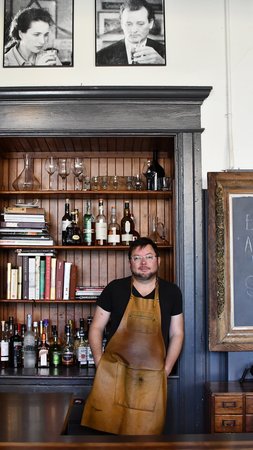
The restaurant is housed in a former classroom of the Aberdeen School, which became the Aberdeen Cultural Centre in 1986. In 2017, the centre added a 50-seat cultural terrace, managed by Les Brumes du Coude during the summer season.

So, where does the name of his restaurant come from? The city of Moncton is known for its Petitcodiac River, whose name means "which bends like a bow" in Mi'kmaq. The Acadians who settled there in 1733 called this place Le Coude because of the bend in this powerful brown river, where the mists from the marshes hide. To this day, Moncton is still nicknamed Le Coude.
However, the name Les Brumes du Coude has a very different meaning for the owner-chef Michel Savoie. He explains this term as being a description of what inspires him in cooking: the misty smells of simmered dishes, the vapors that are the result of physical effort, or elbow grease.

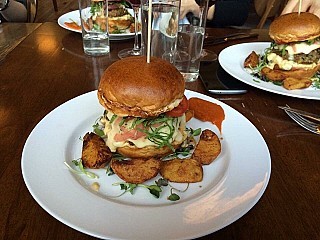
His cuisine is generous, fair, and on point, in the spirit of a French bistro. Inspired by seasonal local and sea products, it features a blend of French, Acadian, and other culinary traditions. "There is always something new to discover at Les Brumes du Coude because, just like the menu, the wine and cocktail list is constantly evolving. The team at Les Brumes du Coude will be pleased to welcome you to this lively, warm, and friendly space," he explains.
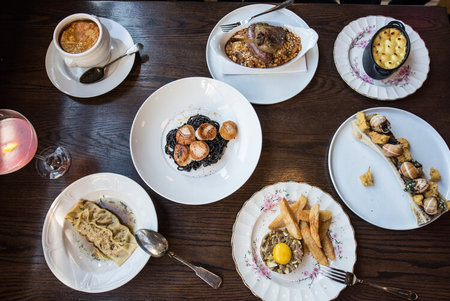
Originally from Tabusintac, a small village north of Néguac, Michel Savoie was not destined for the restaurant business. Before the end of his high school studies, he had not really shown an interest in cooking. Financial reasons did not allow him to attend university. At 18, with no particular qualifications, he found himself working in a kitchen, starting as a dishwasher. Gradually, he discovered a certain talent in the pots and pans.
He has been in the restaurant industry for about twenty years, mainly in Montreal and Tours, France, often holding positions at the lower end of the hierarchy. His move to France was because he followed his then-wife, who was French. Did he receive formal culinary training? He spent a few months at the ITHQ in his early twenties but was unable to complete the training due to financial constraints.
His desire to combat pervasive junk food, even in Moncton, motivated him to move forward with opening his own restaurant.

Could he be contributing to the reinvention of Acadian cuisine with his attempts to revalue local products? He would rather cook as much as possible with local and sea products from here. One might call it Acadian cuisine if the terroir in question corresponded to an Acadian territory. However, he prefers not to get involved in the thorny debate over the borders of Acadia.
In the meantime, we have the leisure and privilege of enjoying the place, its charming decor, its enticing menu, and the beautiful culinary discoveries that Michel Savoie shares with his clientele. And if you are a fan of mussels, know that the best of the kind have been savored here, in proportions to satisfy the greatest appetites.
Les Brumes du Coude
lesbrumesducoude.com
140 Botsford Street
Moncton, NB E1C 4X5
506 858-0777



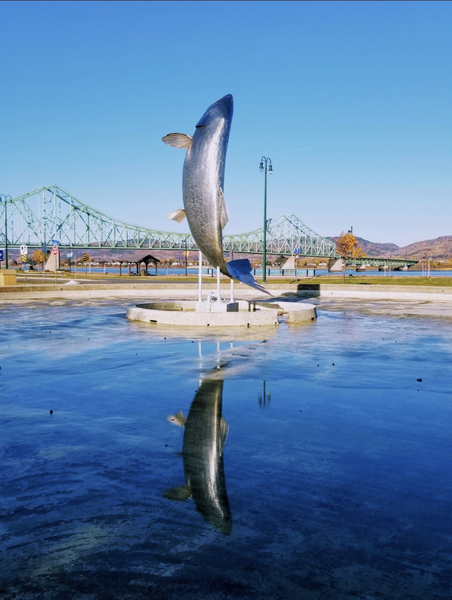
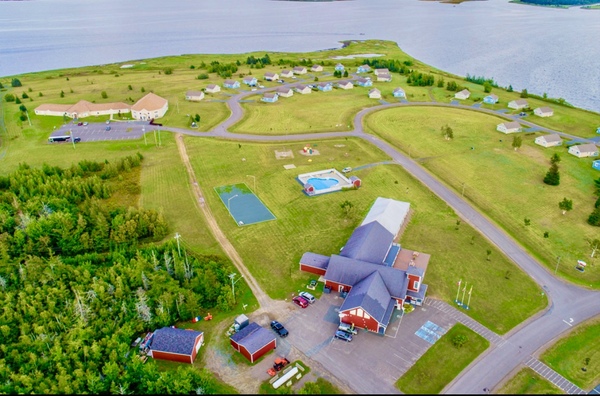
 Martin Albert is proud to have been part of this wonderful adventure for nearly 10 years. For him, the mission and vision of Villégiature Deux Rivières are part of his everyday life. Although the place has already become a staple for quality accommodation and stays in recent years, he aims to make it “the preferred destination in Atlantic Canada, where guests can capture unforgettable Acadian-flavored memories.”
Martin Albert is proud to have been part of this wonderful adventure for nearly 10 years. For him, the mission and vision of Villégiature Deux Rivières are part of his everyday life. Although the place has already become a staple for quality accommodation and stays in recent years, he aims to make it “the preferred destination in Atlantic Canada, where guests can capture unforgettable Acadian-flavored memories.”